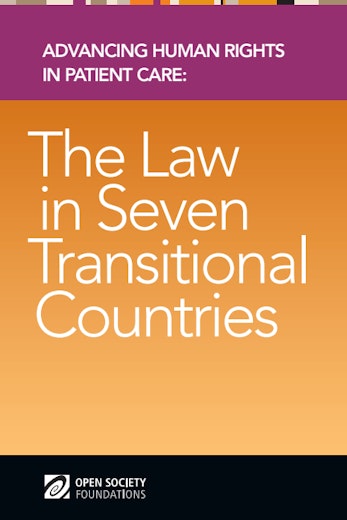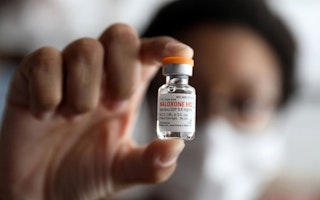Four Key Lessons from Teaching Human Rights for Health
By Tamar Ezer
When students go to medical school, they aspire to become doctors in order to help and heal people. The last thing they imagine is that they would become complicit in abuse.
But we know that too often doctors violate patients’ human rights—from sterilizing women living with HIV without their consent in sub-Saharan Africa, segregating Roma women in unhygienic maternity wards in Romania, to under-prescribing pain medication in Ukraine, and forcibly medicating people with mental disabilities throughout Europe.
The reasons for these violations are many, ranging from discrimination and stigma against groups of people, to misguided over-regulation of medication. But these violations also happen because doctors also often lack basic training in human rights and in working with socially excluded groups like sex workers, people who use drugs, or Roma.
That’s why over the last seven years we’ve collaborated with medical and law schools [PDF] to develop 25 courses on human rights and patient care in nine countries: Armenia, Georgia, Kazakhstan, Kyrgyzstan, Macedonia, Moldova, Russia, Serbia, and Ukraine and courses with a specific focus on human rights and access to medicines in another three countries: Kenya, South Africa, and Uganda.
In this work, we’ve learned four key lessons about teaching human rights:
-
The “how” of teaching is as important as the “what.” Human rights cannot simply be taught through lectures or the memorization of norms. As a faculty member from Kazakhstan explained, “Lecturing gives a great opportunity to receive much knowledge, but it does not involve the class in discussion, in analyzing cases, etc. Interactive teaching makes education more alive.”
An understanding of human rights requires going beyond abstract standards. We must apply them to messy reality, grapple with difficult issues, and confront internal biases. For instance, when confronted with a case of extremely drug resistant TB in a patient, students must balance the rights to liberty, autonomy, and freedom of movement against the danger of infection to the community. And to provide good maternal care for a woman who uses drugs students must examine and debate their own attitudes.
Case studies can be a powerful tool. To meet faculty demand for interactive teaching materials, we partnered with Toronto University’s Health Equity and Law Clinic and the Hastings Center to develop case studies on complex health and human rights issues, such as those above.
-
Socially excluded voices need to come into the classroom. As Enga Kameni, a faculty member from South Africa explained, students need to “feel the problems that marginalized communities face by working directly with them.” Students were outraged when a former drug user described to a classroom how he was operated upon without anesthesia and subjected to excruciating pain in punishment for his addiction.
Students can encounter excluded voices through guest lecturers or site visits, but video is also an effective tool. Through video, students may learn the plight of a Roma family denied emergency care, a transgender man subjected to psychiatric confinement, or a homeless man attempting to access HIV care, among others.
-
Faculty can most effectively lead change when linked to a community. While we initially planned only to develop courses, we were soon beset by faculty requests to connect with others and strengthen their teaching. Human rights in patient care is not a focus of medical or law schools, and faculty members were pioneers at their universities. They wanted a community to share ideas, materials, and experiences. To meet this need, we supported a number of workshops, as well development of a virtual Community of Practice open to the public, which includes faculty materials, articles, exercises, and a section on teaching methodology.
-
There are important links between patient and health care provider rights. Human rights education does not pit doctors against patients; there is an innate linkage. Doctors and other providers cannot provide good care if their own rights are unmet, they face poor working conditions, or lack professional independence. It is hard to provide care to HIV patients without gloves and sterile equipment. Overworked and exhausted doctors cannot as easily respond to patient needs. And doctors face risk when prescribing pain relief in some countries—according to the International Narcotics Control Board, almost half of participating countries reported mandatory minimum sentences for unintentional mistakes in handling opioids.
With these lessons learned, a new generation of rights-respecting health and legal practitioners is emerging, ready and eager to heal instead of harm.
Until June 2016, Tamar Ezer was deputy director of the Law and Health Initiative of the Open Society Public Health Program.

